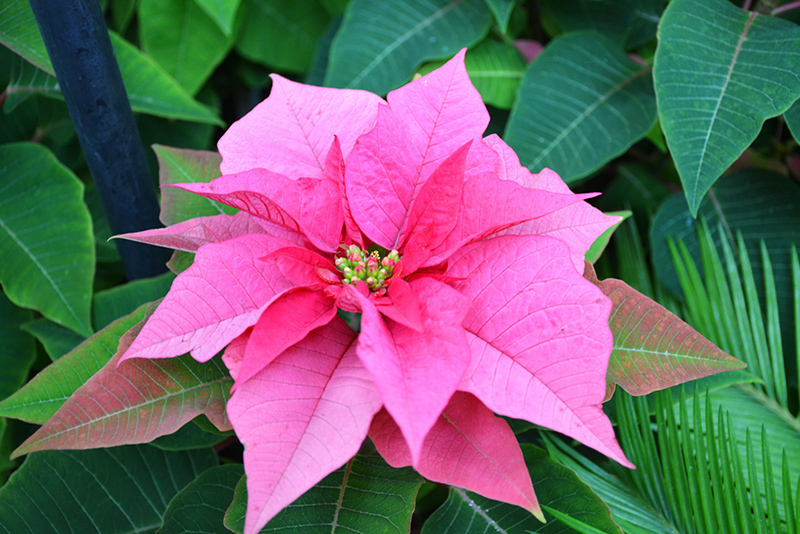Know Before You Go!
Get notified before our plants arrive in stores near you.
Plant Care Library

Princettia® Pink Poinsettia flowers
Princettia® Pink Poinsettia flowers
(Photo courtesy of NetPS Plant Finder)
Height: 12 inches
Spread: 18 inches
Sunlight:
![]()
![]()
Brand: Suntory
Description:
An outstanding, compact selection featuring a base of dark green leaves, with small yellow floral tips at the terminal ends surrounded by large, hot pink bracts; keep away from cold drafts and keep soil evenly moist
Features & Attributes
Poinsettias are bred and grown to be indoor plants, which generally results in dense, shrubby, multi-stemmed plants with a rounded yet upright habit of growth. They are characterized by the ring of showy bracts at the terminal ends of most branches, which are their primary feature of interest. Princettia® Pink Poinsettia features bold hot pink flat-top flowers with rose overtones at the ends of the branches from early to late winter. The "flowers" are actually comprised of a showy ring of colored bracts (modified leaf structures) surrounding the true yellow inflorescence in the center. Its pointy leaves remain dark green in color with distinctive creamy white veins throughout the season. Since you are not expected to grow this plant out from the way that you purchase it from the store, what you see is more or less what you get for the duration of its functional life.
Planting & Growing
Poinsettias are usually grown indoors as seasonal plants. They decorate winter households around Christmas time and over the New Year celebrations, bringing a splash of color to a cold and bleak time of the year when vibrant plants are in short supply. In nature, they are found growing as small shrubs in relatively dry tropical forests of the mid-Americas, where temperatures rarely dip below freezing. The distinctive coloration of their flower bracts is also not completely natural, but rather is forced in the greenhouse through a special combination of timing and controlled darkness. This is why poinsettias tend to be treated as disposable plants, as it is much more difficult for the average home gardener to get them to color in subsequent years than it is to just buy a replacement each year. Given their short lifespan indoors, they are generally purchased at their final height, spread and density, all of which are achieved in a controlled greenhouse environment. As such, they are generally not grown outdoors in a garden or a landscape, even in regions where they are winter-hardy. However, avid gardeners are often able to keep poinsettias as indoor houseplants and get them to color year after year; contact the store for additional information on how to do this.
During its stunning seasonal visit to your home, treat your poinsettia like you do most other houseplants. The idea is to keep the plant healthy and the foliage and bracts colorful throughout this period. Keep it in a consistently warm location away from cold drafts. Bright sunlight isn't necessary unless you're trying to keep it long beyond its intended season, but neither will it hurt the plant. It will even thrive with minimal light for a couple of months. Your poinsettia requires even moisture and should not be allowed to dry out; be prepared to water it every 2-3 days, as soon as the soil is no longer moist to the touch. If the leaves start to droop, it needs watering immediately! Poinsettias usually come with sufficient soil and/or growing medium, so they don't need to be repotted unless otherwise indicated.
-- THIS IS A HOUSEPLANT AND IS NOT MEANT TO SURVIVE THE WINTER OUTDOORS IN OUR CLIMATE --
A NetPS Plant Finder tool
